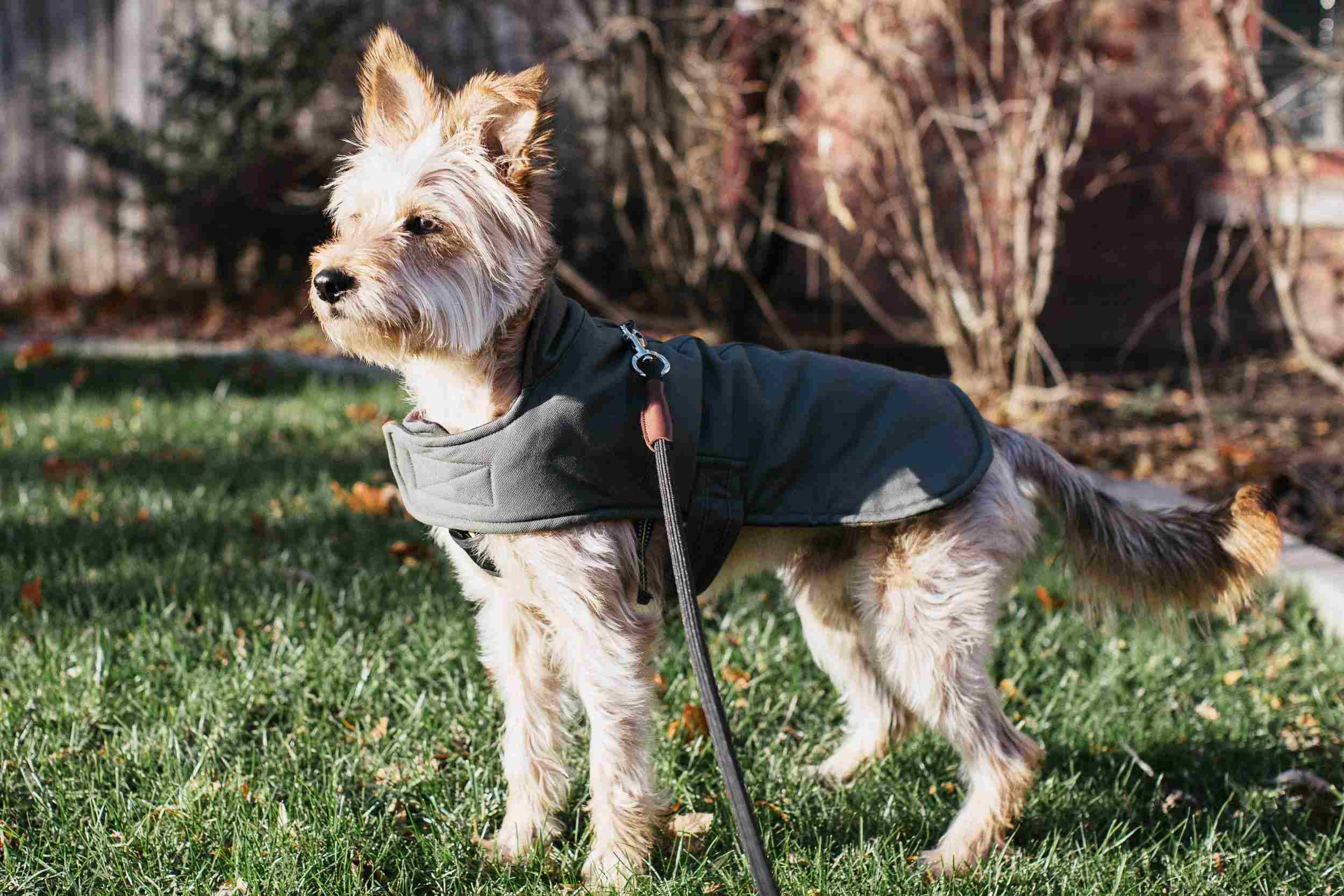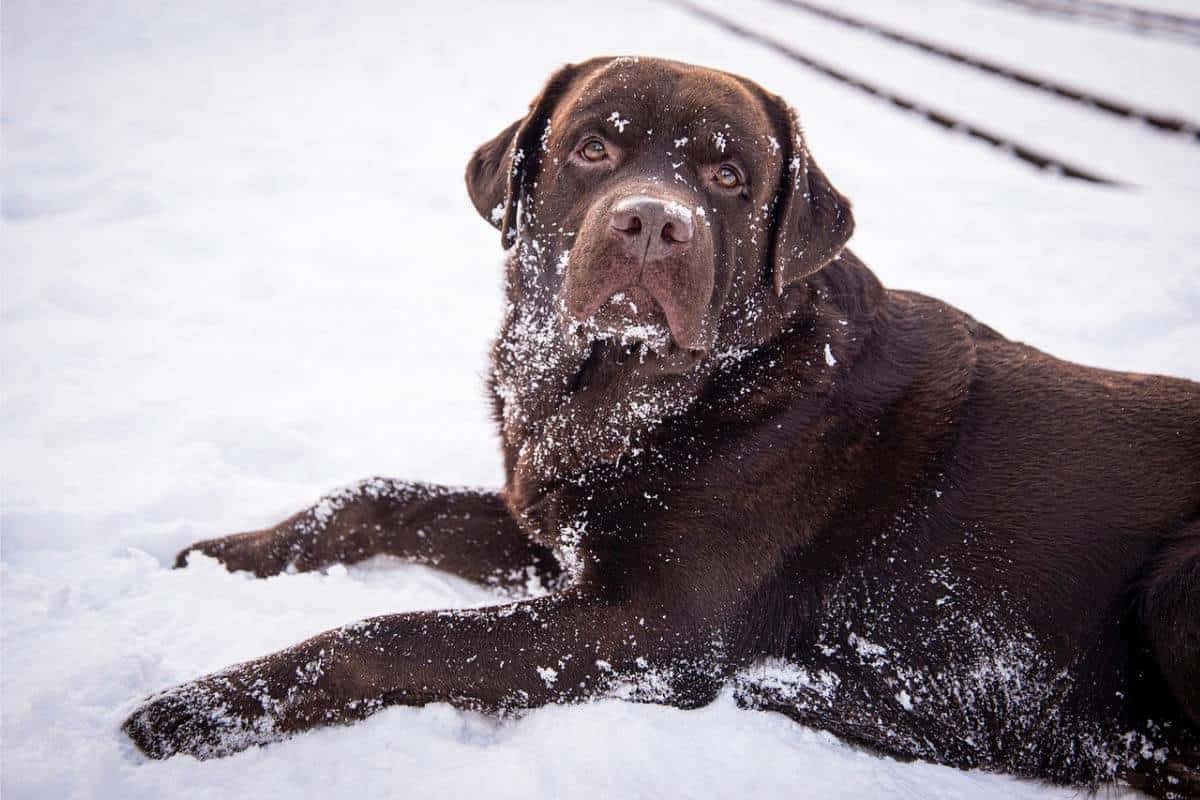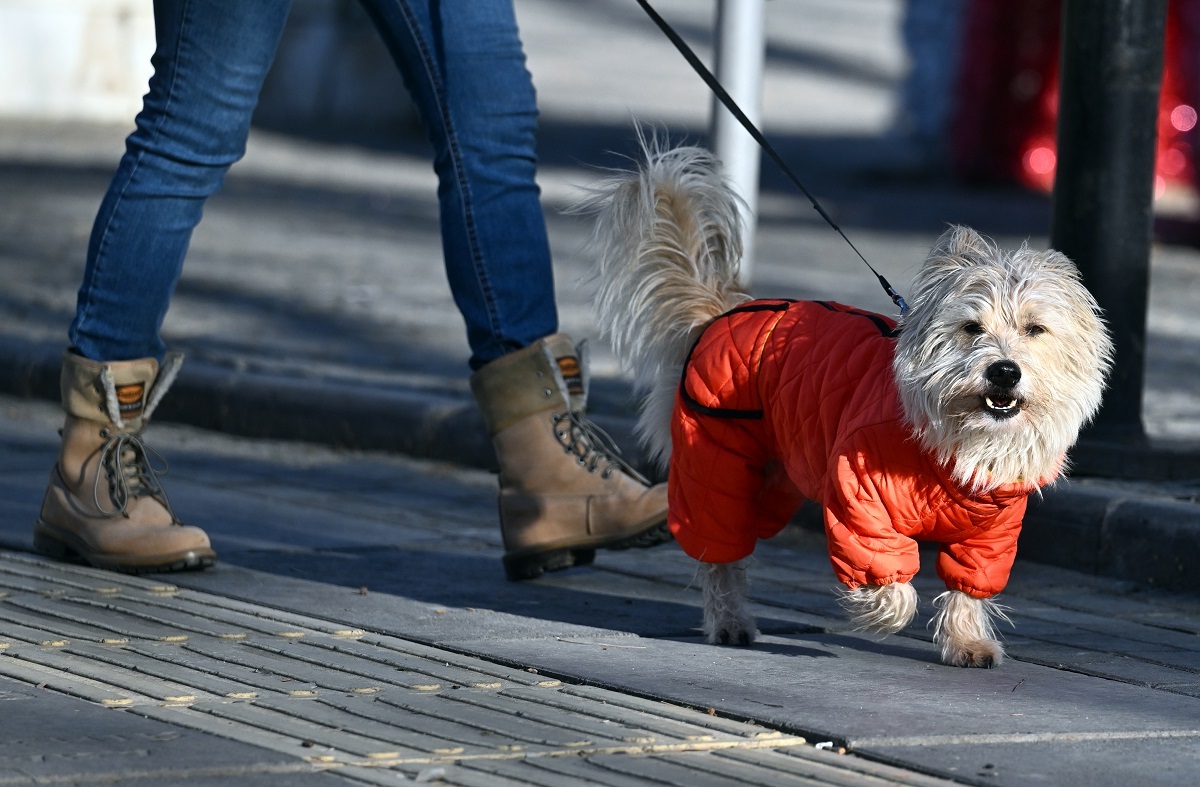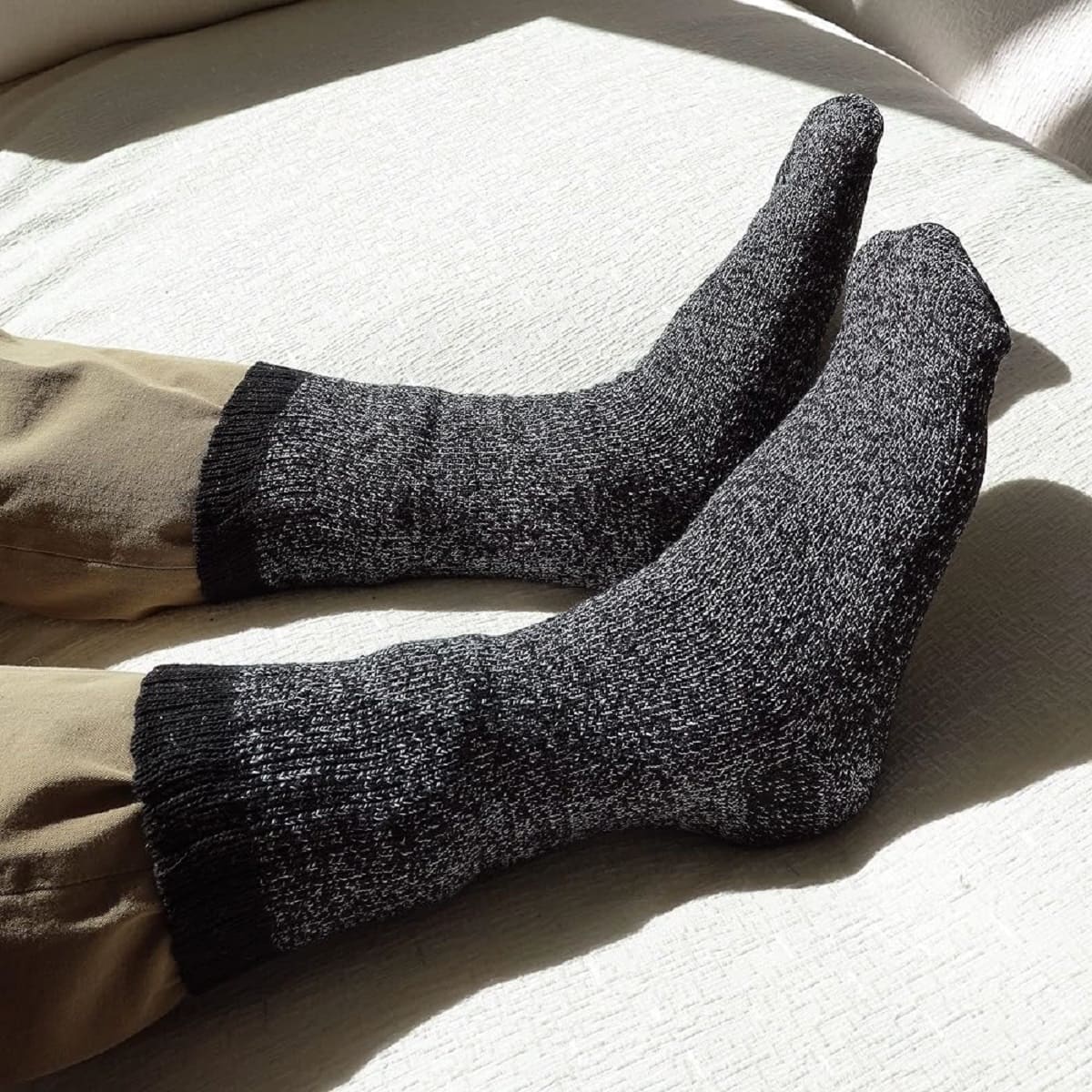Home>Weather and Climate>Duration For Dogs To Stay Outside In 30 Degree Weather


Weather and Climate
Duration For Dogs To Stay Outside In 30 Degree Weather
Published: March 3, 2024
Discover the ideal duration for dogs to stay outside in 30-degree weather. Learn how weather and climate impact your pet's outdoor time.
(Many of the links in this article redirect to a specific reviewed product. Your purchase of these products through affiliate links helps to generate commission for Temperatures.com, at no extra cost. Learn more)
Table of Contents
- Factors to Consider Before Leaving Your Dog Outside in 30 Degree Weather
- Signs of Hypothermia in Dogs and How to Prevent It
- Tips for Keeping Your Dog Warm and Safe in Cold Weather
- Recommended Duration for Dogs to Stay Outside in 30 Degree Weather
- Importance of Monitoring Your Dog's Behavior and Comfort Level Outdoors
Factors to Consider Before Leaving Your Dog Outside in 30 Degree Weather
When contemplating leaving your dog outside in 30-degree weather, several crucial factors demand consideration to ensure your furry friend's safety and well-being. Understanding these elements can help you make informed decisions and take appropriate measures to protect your dog from the cold.
-
Breed and Coat Type: Different dog breeds possess varying levels of tolerance to cold temperatures. Breeds with thick, double-layered coats, such as Siberian Huskies and Alaskan Malamutes, are more adept at handling colder climates than those with short or single-layered coats. Additionally, smaller breeds and those with minimal body fat may struggle to retain heat in 30-degree weather.
-
Age and Health: Puppies, senior dogs, and those with underlying health issues are more susceptible to the adverse effects of cold weather. Young puppies have not fully developed their ability to regulate body temperature, while older dogs may have weakened immune systems and reduced tolerance to extreme temperatures. Dogs with health conditions such as arthritis may experience increased discomfort in cold weather.
-
Acclimatization: Dogs that are accustomed to colder climates may fare better in 30-degree weather than those acclimated to warmer environments. If your dog has recently moved from a warmer region or has not been exposed to cold temperatures, their ability to tolerate the cold may be compromised.
-
Activity Level: The level of physical activity your dog engages in while outdoors can impact their ability to stay warm. Dogs that are active and moving around generate more body heat, which can help them stay comfortable in colder temperatures. Conversely, dogs that remain sedentary may struggle to maintain their body heat.
-
Shelter and Protection: Assess the outdoor environment to determine the availability of adequate shelter and protection from the elements. A sheltered area free from drafts, such as a well-insulated dog house or a designated space within a garage, can provide essential protection from the cold wind and precipitation.
Considering these factors before leaving your dog outside in 30-degree weather enables you to make informed decisions regarding their well-being and comfort. By understanding your dog's individual needs and taking appropriate precautions, you can help ensure that they remain safe and comfortable in cold weather conditions.
Signs of Hypothermia in Dogs and How to Prevent It
Hypothermia, a potentially life-threatening condition resulting from prolonged exposure to cold temperatures, can pose a significant risk to dogs when they are outdoors in 30-degree weather. Recognizing the signs of hypothermia and taking preventive measures are essential for safeguarding your canine companion's well-being.
Signs of Hypothermia in Dogs
-
Shivering: Dogs may exhibit uncontrollable shivering as their bodies attempt to generate heat in response to the cold.
-
Lethargy: A dog experiencing hypothermia may appear unusually tired or lethargic, displaying a lack of energy and enthusiasm.
-
Pale Gums: Checking your dog's gums can provide insight into their condition. Pale or bluish gums may indicate reduced blood circulation due to hypothermia.
-
Muscle Stiffness: Hypothermic dogs may display stiffness in their muscles, hindering their movement and causing discomfort.
-
Shallow Breathing: Respiratory changes, such as shallow or labored breathing, can signal the onset of hypothermia in dogs.
-
Confusion or Disorientation: Dogs may exhibit signs of confusion or disorientation, appearing dazed or unresponsive to their surroundings.
How to Prevent Hypothermia in Dogs
-
Limit Outdoor Exposure: In 30-degree weather, it's crucial to minimize your dog's time outdoors, especially if they are not acclimated to cold temperatures.
-
Provide Adequate Shelter: Ensure that your dog has access to a well-insulated shelter, such as a dog house or a designated area within your home or garage, to shield them from the cold.
-
Protective Clothing: Consider outfitting your dog with a canine coat or sweater to provide an additional layer of insulation and warmth.
-
Monitor Outdoor Time: Supervise your dog's outdoor activities and bring them indoors if you notice signs of discomfort or prolonged shivering.
-
Warm Bedding: Inside the house, offer your dog a warm and comfortable bed with blankets to help them retain body heat.
-
Stay Active: Engage your dog in moderate physical activity to promote circulation and generate body heat while outdoors.
By remaining vigilant for the signs of hypothermia and implementing preventive measures, you can effectively safeguard your dog from the adverse effects of cold weather. Prioritizing your dog's comfort and well-being during chilly conditions is essential for fostering a safe and nurturing environment for your beloved pet.
Tips for Keeping Your Dog Warm and Safe in Cold Weather
Ensuring your dog's comfort and safety in cold weather involves implementing thoughtful strategies to mitigate the effects of low temperatures. By prioritizing their well-being, you can create a nurturing environment that promotes warmth and security for your beloved canine companion.
-
Canine Apparel: Consider outfitting your dog with a well-fitted canine coat or sweater designed to provide insulation and shield them from the cold. These garments can be particularly beneficial for short-haired or smaller breeds that may struggle to retain body heat in 30-degree weather.
-
Protective Paw Care: Cold pavement and icy surfaces can pose risks to your dog's paw pads. Utilize paw balm or protective booties to safeguard their paws from the harsh effects of cold weather and prevent potential injuries or discomfort.
-
Hydration and Nutrition: Adequate hydration and a balanced diet play a crucial role in helping your dog regulate body temperature. Ensure that your dog has access to fresh, unfrozen water at all times, and consider adjusting their diet to accommodate potential increases in energy expenditure during colder weather.
-
Warm Bedding: Inside the house, provide your dog with a cozy and well-insulated bed equipped with soft blankets or bedding materials. Elevating their sleeping area slightly off the ground can further shield them from cold drafts and promote warmth.
-
Indoor Shelter Options: If your dog spends extended periods outdoors, ensure they have access to a well-insulated dog house or a designated area within a garage or enclosed porch. This shelter should offer protection from wind and precipitation, maintaining a comfortable environment for your dog.
-
Regular Checks and Grooming: Routinely inspect your dog for signs of frostbite, particularly on their ears, tail, and paw pads. Additionally, maintaining their coat through regular grooming can help preserve its insulating properties and prevent matting, which can compromise its effectiveness in retaining heat.
-
Supervision and Interaction: When your dog is outdoors, periodic supervision and interaction can help monitor their comfort level and well-being. Engaging in activities with your dog can encourage movement and circulation, aiding in the retention of body heat.
By implementing these tips, you can effectively safeguard your dog from the challenges posed by cold weather, fostering a warm and secure environment that promotes their overall well-being. Prioritizing their comfort and safety demonstrates your commitment to providing a nurturing and protective space for your cherished pet, ensuring they can thrive even in chilly conditions.
Read more: Sunny Sunday Forecast: 70s to 80 Degrees
Recommended Duration for Dogs to Stay Outside in 30 Degree Weather
Determining the appropriate duration for dogs to remain outdoors in 30-degree weather is crucial for safeguarding their well-being and comfort. While some dogs may exhibit resilience to colder temperatures, it's essential to establish reasonable limits to prevent potential health risks associated with prolonged exposure to chilly conditions.
In 30-degree weather, the recommended duration for dogs to stay outside should be limited to brief periods, typically ranging from 10 to 30 minutes. This timeframe allows for brief bathroom breaks and short bouts of exercise while minimizing the risk of hypothermia and discomfort. Factors such as breed, coat type, and individual tolerance to cold should also be considered when determining the specific duration for outdoor activities.
For breeds with thick, double-layered coats and a high tolerance to cold, such as Siberian Huskies and Alaskan Malamutes, the upper end of the recommended duration may be applicable. These breeds are better equipped to withstand colder temperatures and may benefit from slightly longer outdoor excursions. Conversely, breeds with short or single-layered coats, as well as smaller or senior dogs, should adhere to the lower end of the recommended duration to avoid potential adverse effects of the cold.
It's important to emphasize that the recommended duration for outdoor stays in 30-degree weather serves as a general guideline and should be adjusted based on individual circumstances. Monitoring your dog's behavior and comfort level during outdoor activities is paramount, as signs of distress or discomfort may necessitate immediate relocation to a warmer environment.
Additionally, the presence of adequate shelter and protection from the elements can extend the permissible duration for outdoor stays. Dogs provided with access to well-insulated shelters, such as a cozy dog house or a designated area within a garage, may be able to tolerate slightly longer periods outdoors, provided that they have the option to seek warmth and refuge as needed.
By adhering to the recommended duration for dogs to stay outside in 30-degree weather and considering individual factors such as breed, coat type, and shelter availability, pet owners can effectively balance their dog's need for outdoor activity with the imperative to safeguard their well-being in cold weather. Prioritizing responsible outdoor practices and attentive monitoring can contribute to creating a safe and enjoyable outdoor experience for dogs, ensuring their health and happiness even in chilly conditions.
Importance of Monitoring Your Dog's Behavior and Comfort Level Outdoors
Monitoring your dog's behavior and comfort level outdoors is paramount when exposing them to 30-degree weather. This attentive approach enables you to assess their well-being, address potential discomfort, and make informed decisions regarding their outdoor activities. By remaining vigilant and responsive to your dog's cues, you can create a safe and nurturing environment that prioritizes their health and happiness.
Dogs communicate their physical and emotional state through subtle cues and behaviors, especially when exposed to cold weather. Observing their behavior outdoors allows you to identify signs of distress, discomfort, or potential health issues, empowering you to take prompt action to ensure their well-being. Additionally, monitoring your dog's comfort level provides valuable insights into their tolerance to the cold, guiding you in determining the appropriate duration for outdoor stays and the need for additional protective measures.
When monitoring your dog's behavior outdoors in 30-degree weather, several key indicators warrant attention. Signs of shivering, reluctance to move or explore, seeking warmth or shelter, and exhibiting signs of distress or discomfort are all signals that necessitate immediate intervention. Furthermore, observing changes in their gait, posture, and responsiveness can offer valuable insights into their comfort level and overall well-being.
By maintaining a keen awareness of your dog's behavior and comfort level, you can proactively address their needs and mitigate potential risks associated with cold weather exposure. This proactive approach fosters a strong bond of trust and care between you and your dog, demonstrating your commitment to their welfare and ensuring that they feel secure and supported in outdoor environments.
Furthermore, monitoring your dog's behavior and comfort level outdoors facilitates the timely identification of any adverse reactions to the cold, such as the onset of hypothermia or discomfort due to prolonged exposure. This awareness empowers you to swiftly intervene, relocating your dog to a warmer environment and providing the necessary care and attention to alleviate their discomfort.
In essence, the importance of monitoring your dog's behavior and comfort level outdoors cannot be overstated. This attentive approach not only safeguards your dog from potential health risks and discomfort but also strengthens the bond between you and your canine companion. By remaining attuned to their needs and responding with care and consideration, you can create a harmonious and secure outdoor experience for your dog, ensuring that they can enjoy the outdoors safely and comfortably, even in 30-degree weather.














